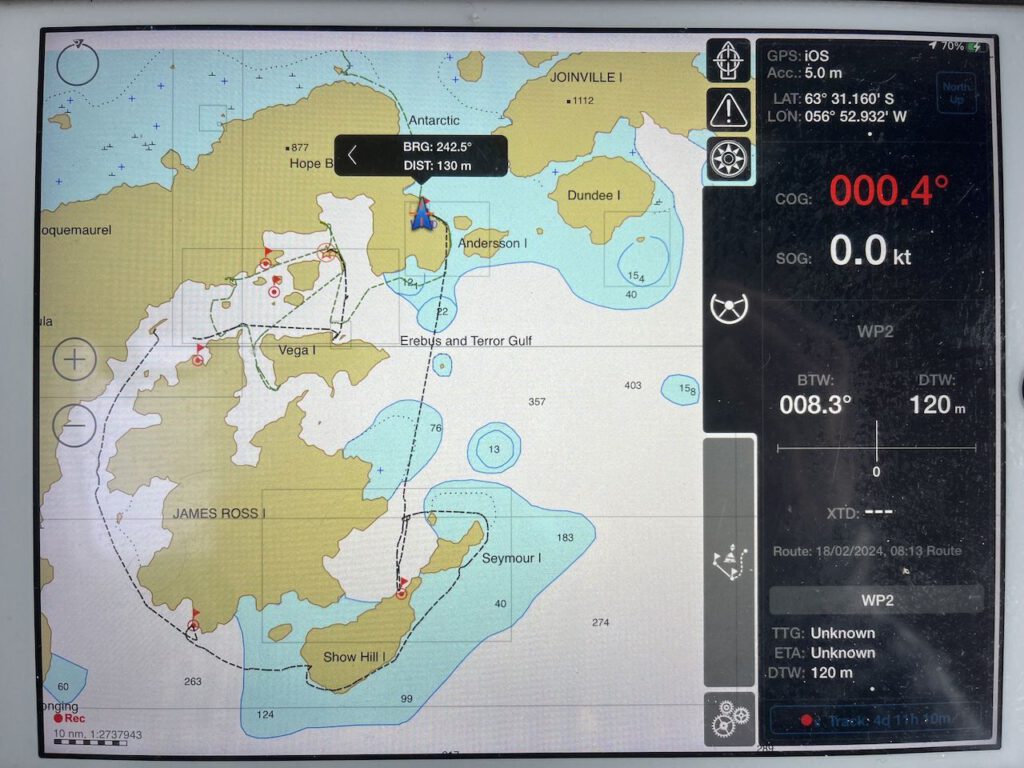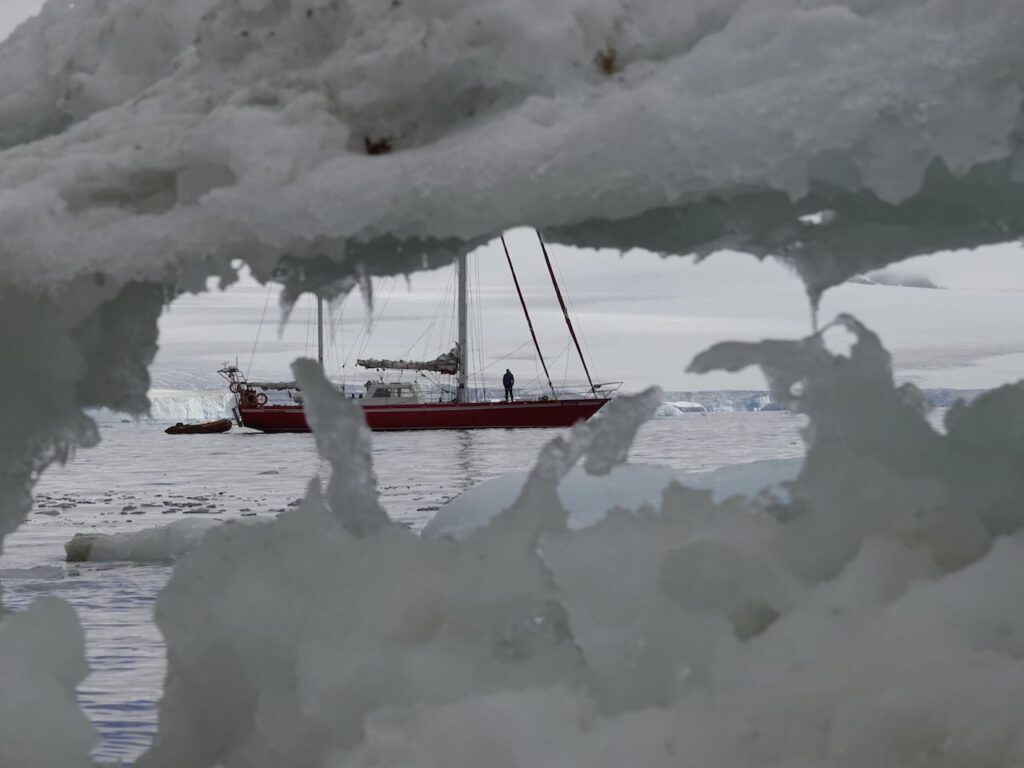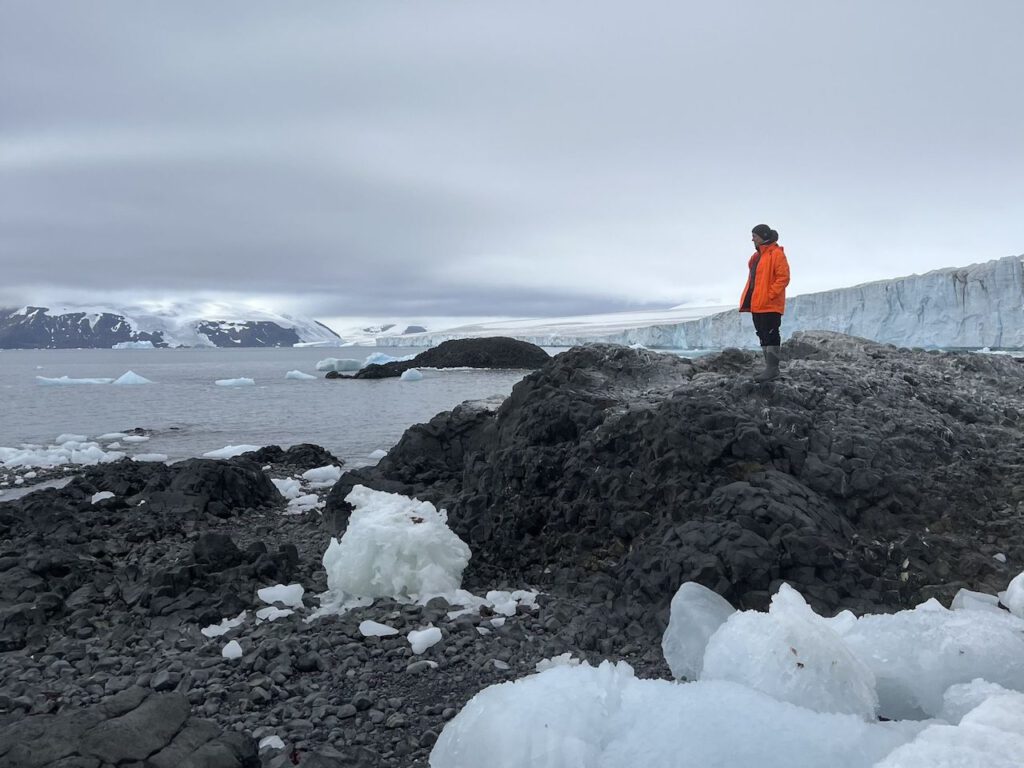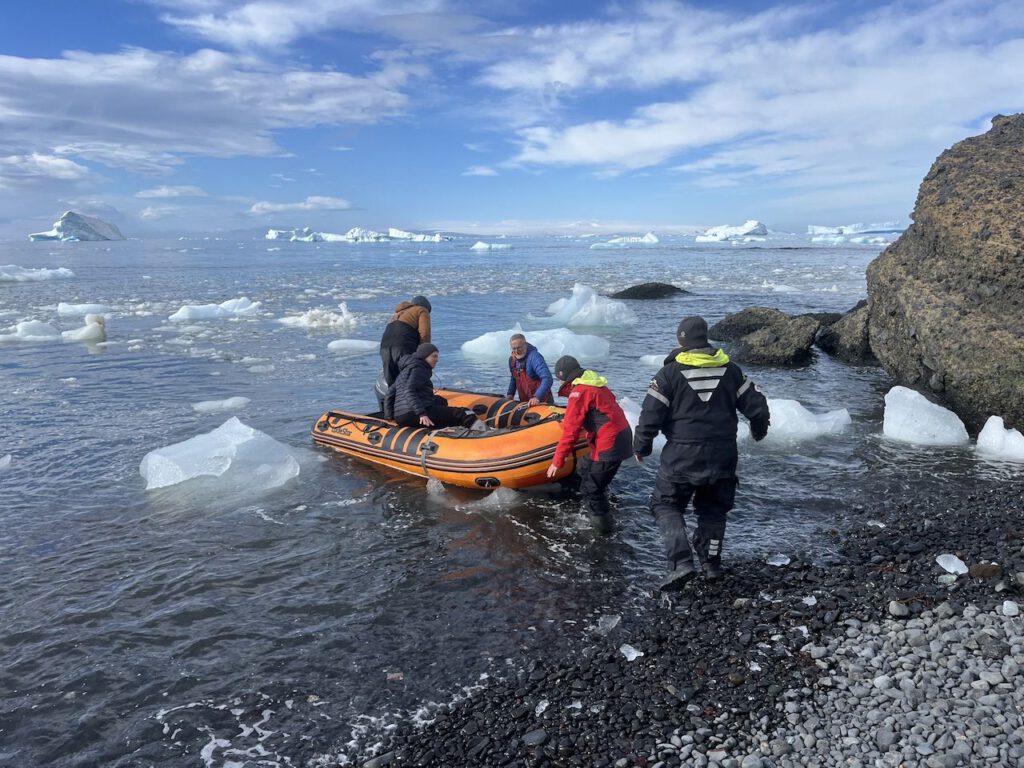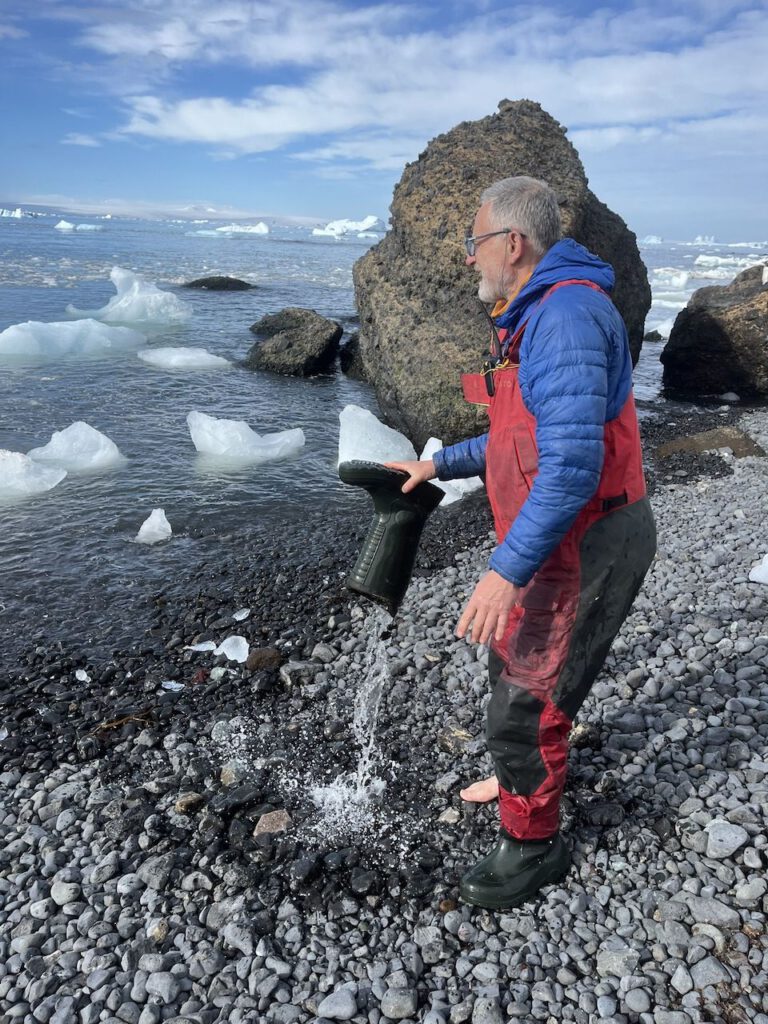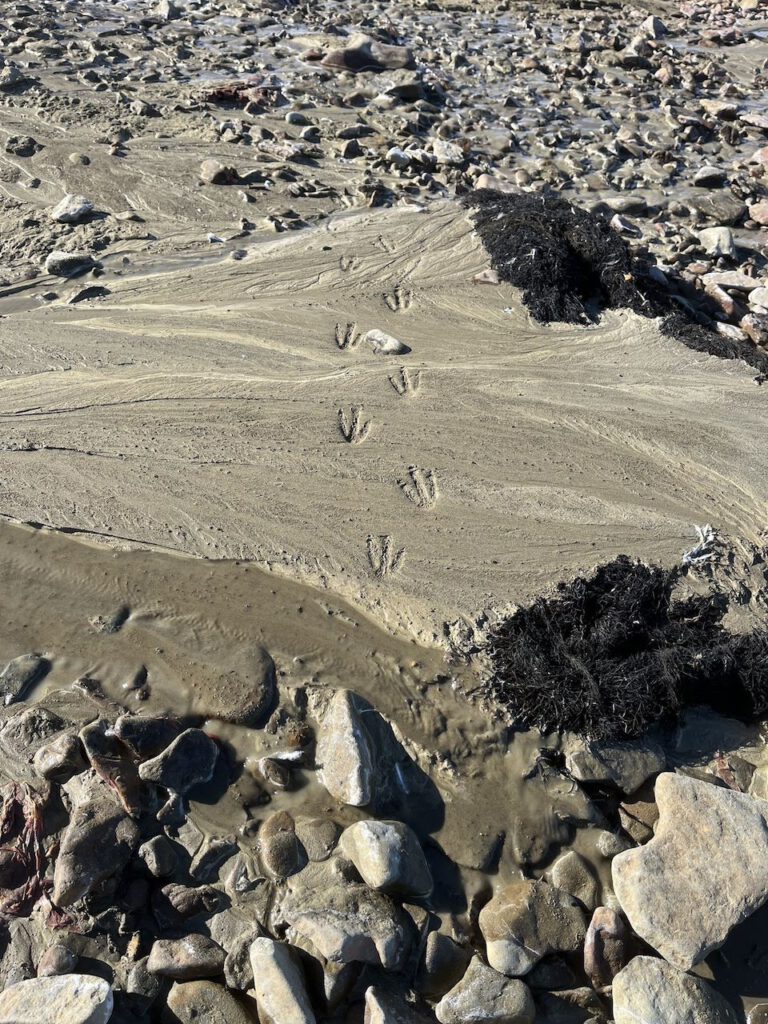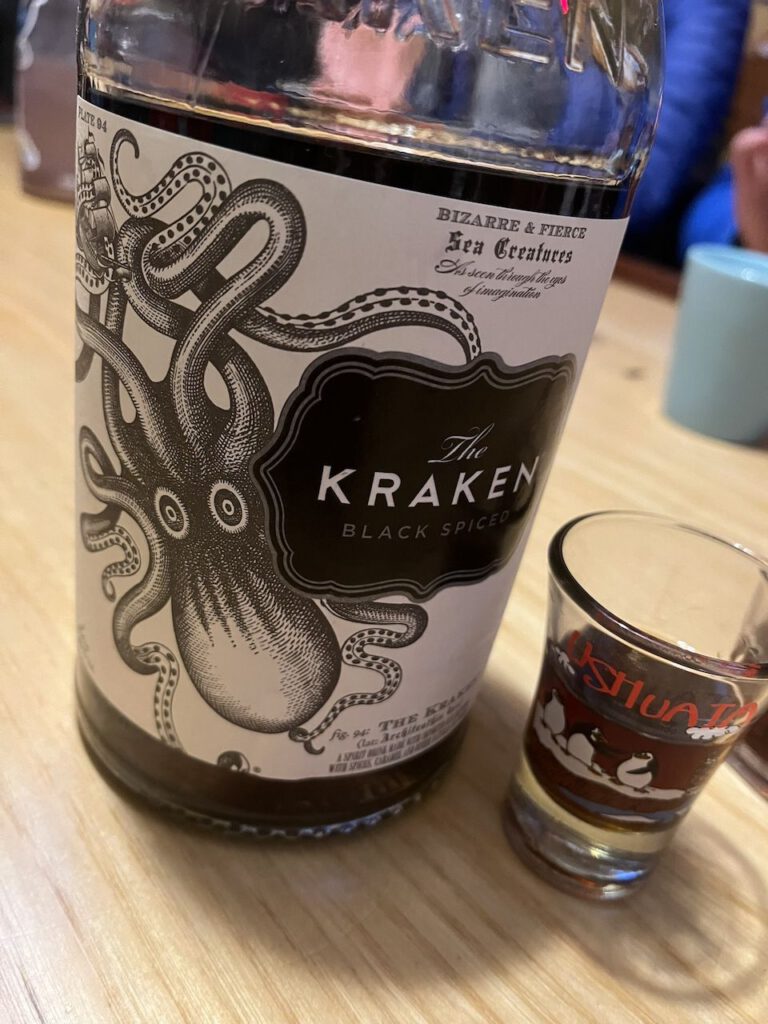As the route to the east seemed to be blocked by ice, we decided to try to make our way further south on the west side of James Ross Island. Here too, between the mainland (Peninsula) and James Ross Island, there was a lot of ice. All but one of the bays on the west side of the island, all named after high-proof spirits (Brandy Bay, Whisky Bay, Rum Bay, Gin Bay), were full of pack ice. We made our way close to the mainland through the less dense tangle of icebergs, growlers and floes, got to know the fierce katabatic winds and appropriately celebrated Sir Ernest Shackleton’s 150th birthday on February 15 with a Shackleton whisky, not in Whisky Bay, but at anchor on Long Island.
True to the boss’s motto that it is in the nature of man to discover the unknown, we decided to venture further south and embark on the circumnavigation adventure.
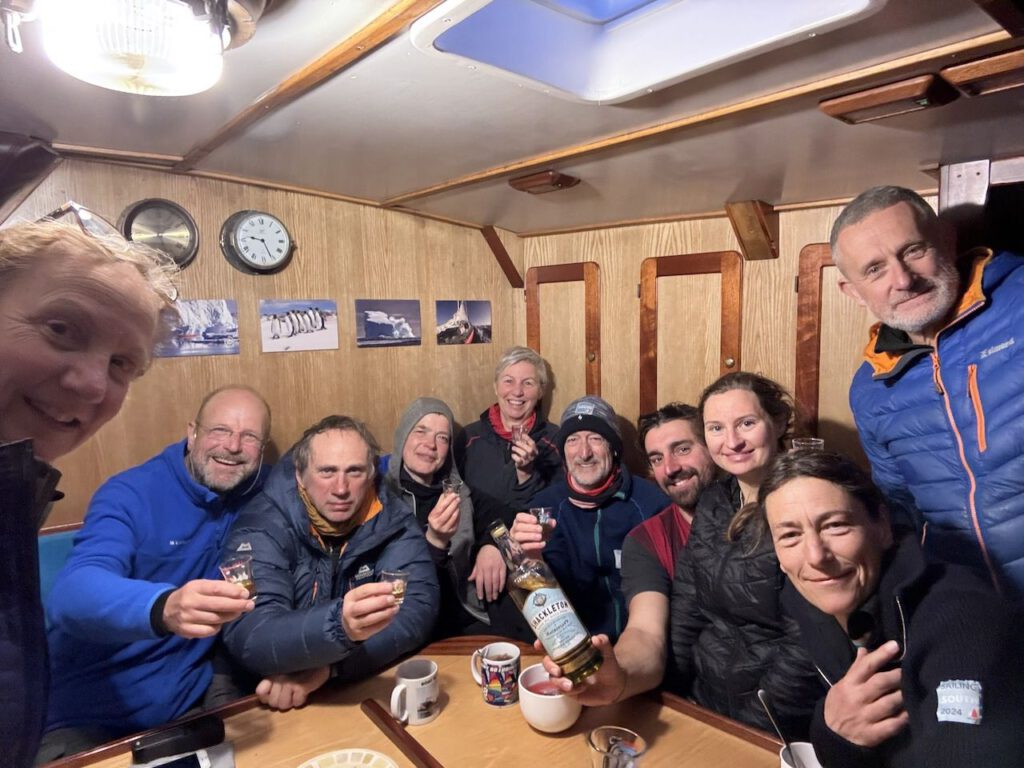
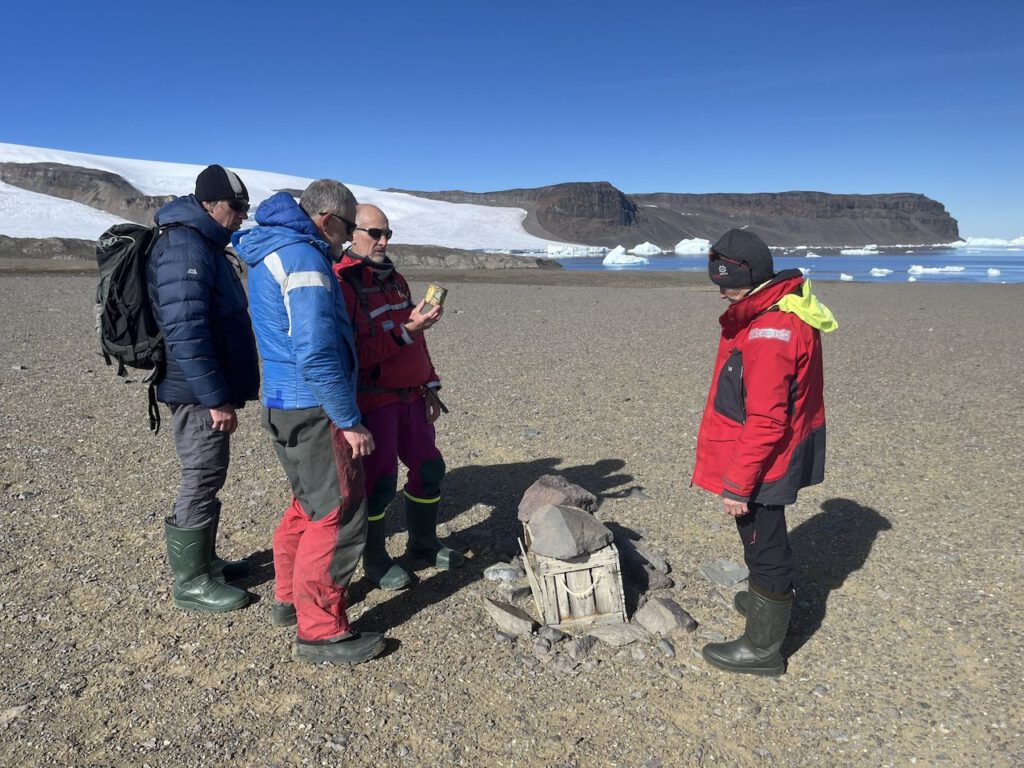

Near the southern cape of the island, we discovered an old depot box during a shore leave – evidence of the past. Off Snow Hill Island, to the south-east of James Ross Island, we anchored at an iceberg that had run aground off the edge of the ice shelf and decided to sail further east the next day, all the way around. Unfortunately, we didn’t discover the colony of emperor penguins located somewhere there, but we glided across the mirror-smooth water in bright sunshine and calm winds, accompanied by numerous icebergs of all shapes and sizes. Heading north again, we encountered Adelie penguins on Seymour Island and traces of past geological eras in the form of numerous fossils.
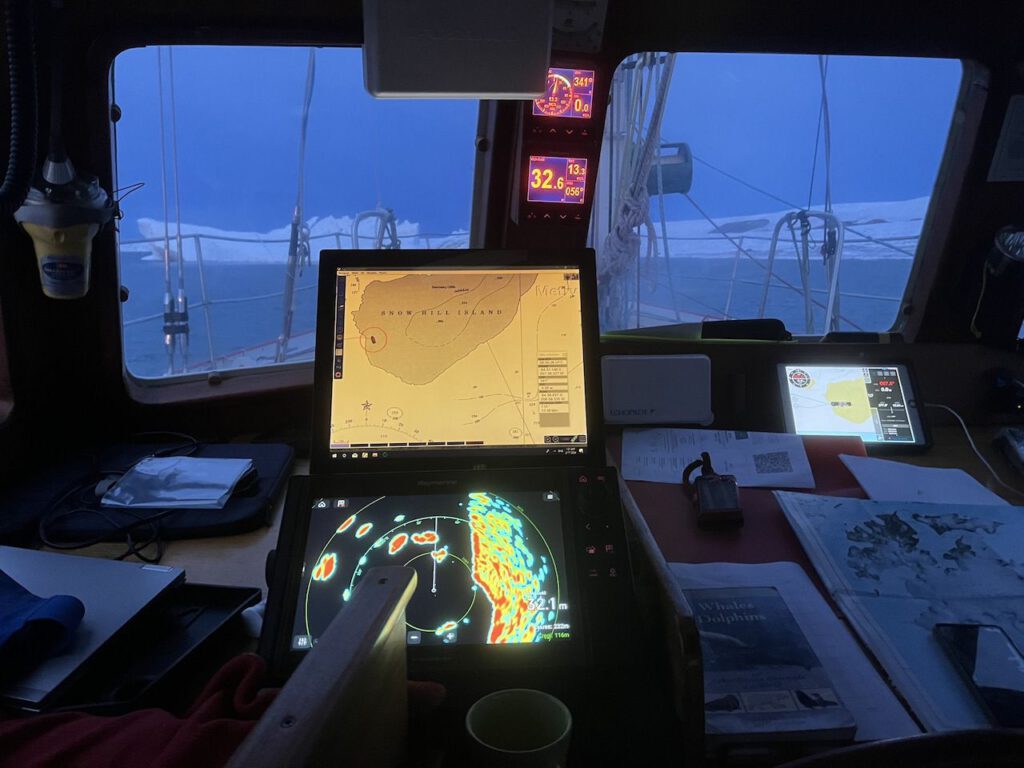
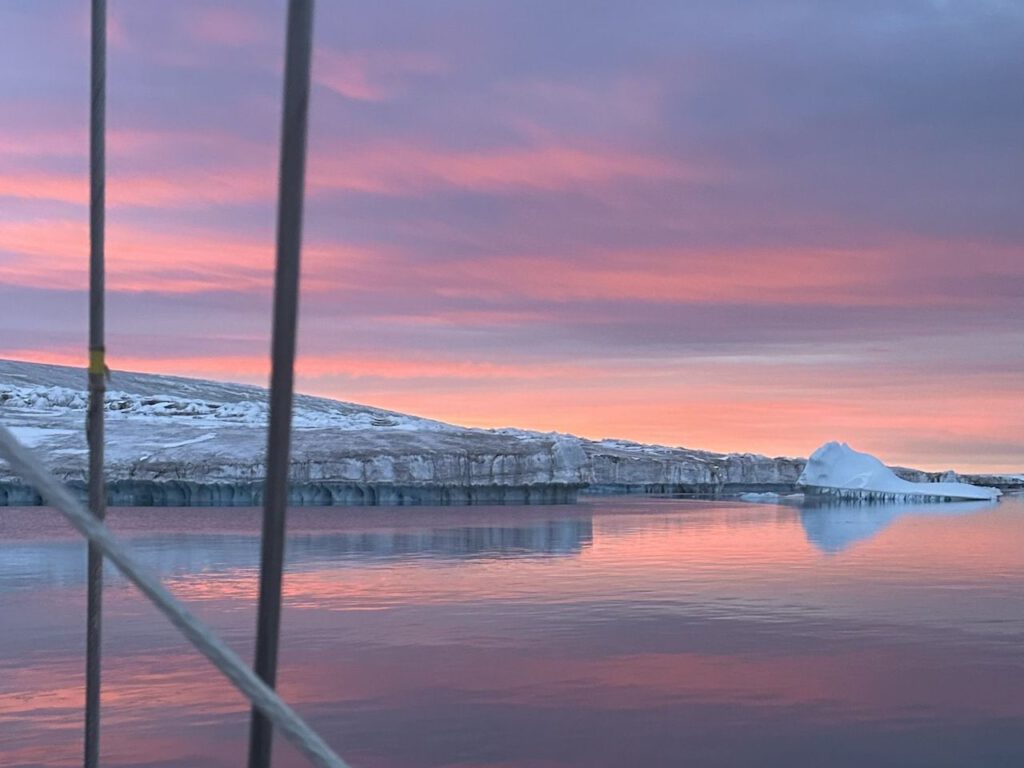
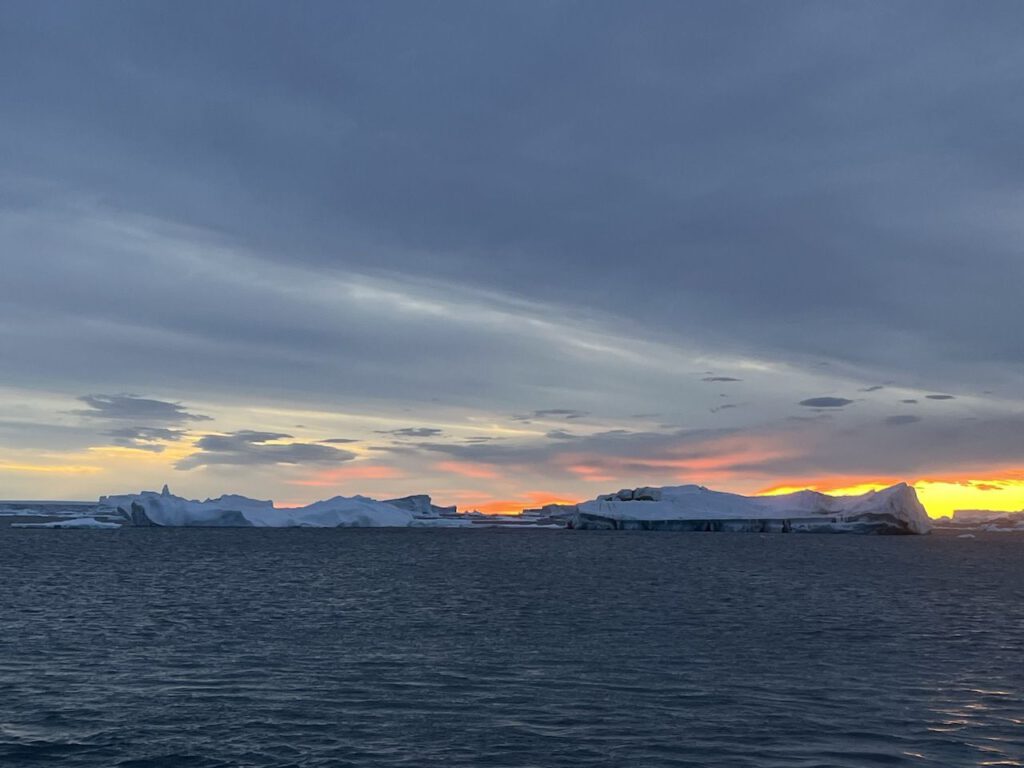
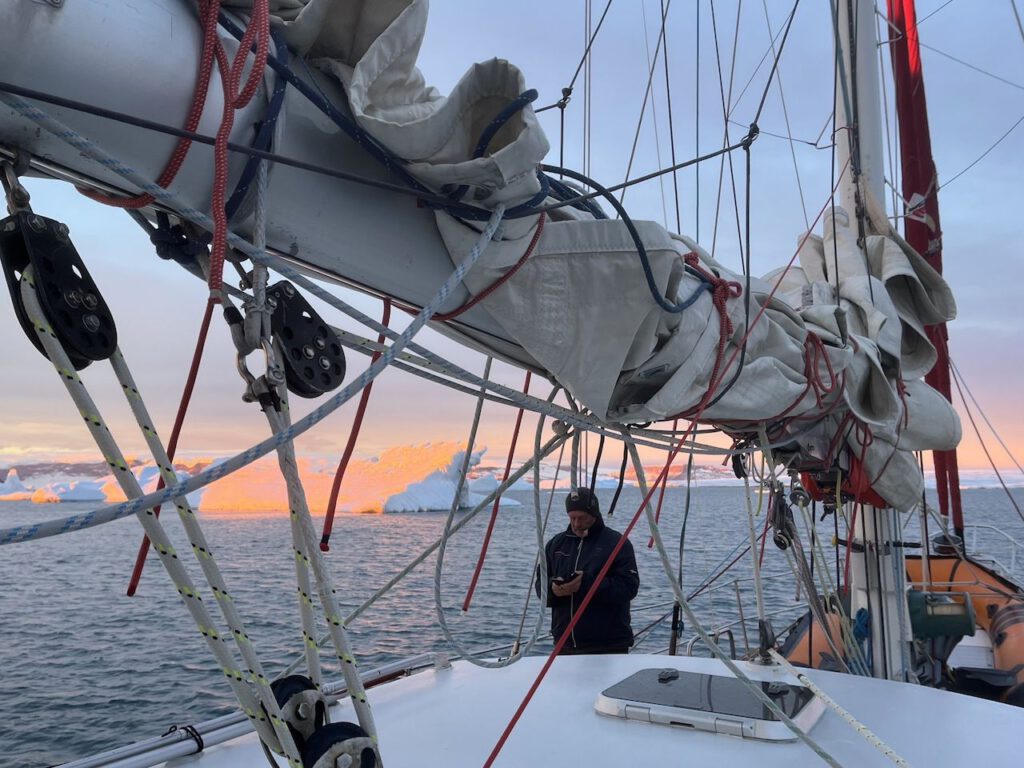
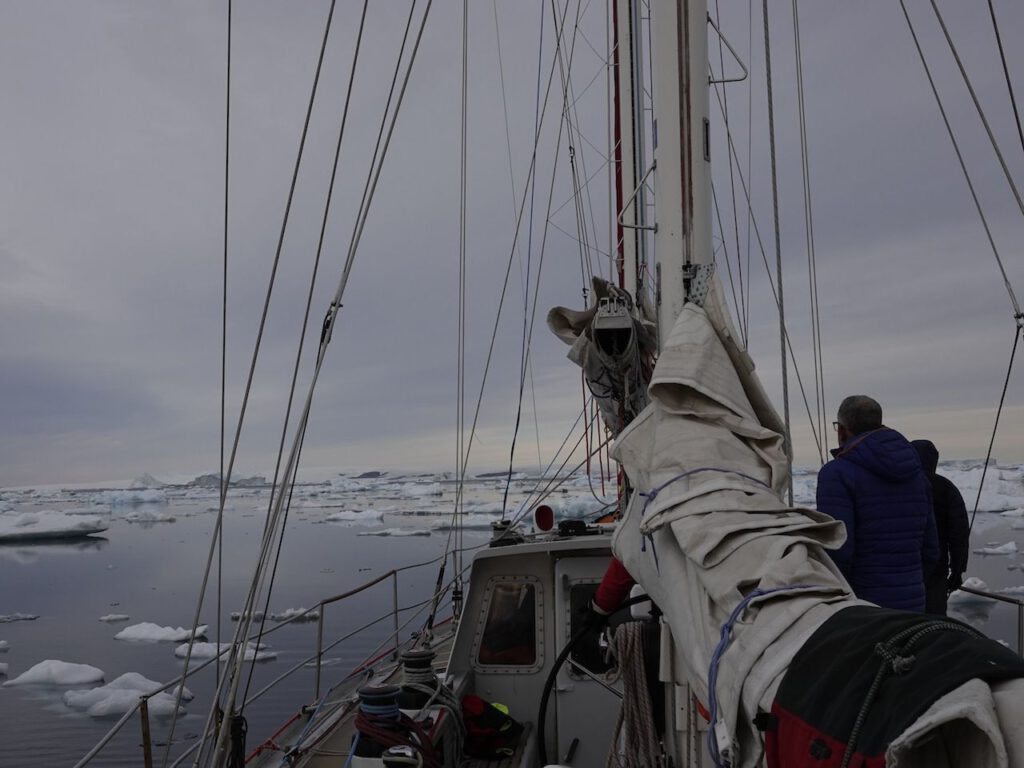
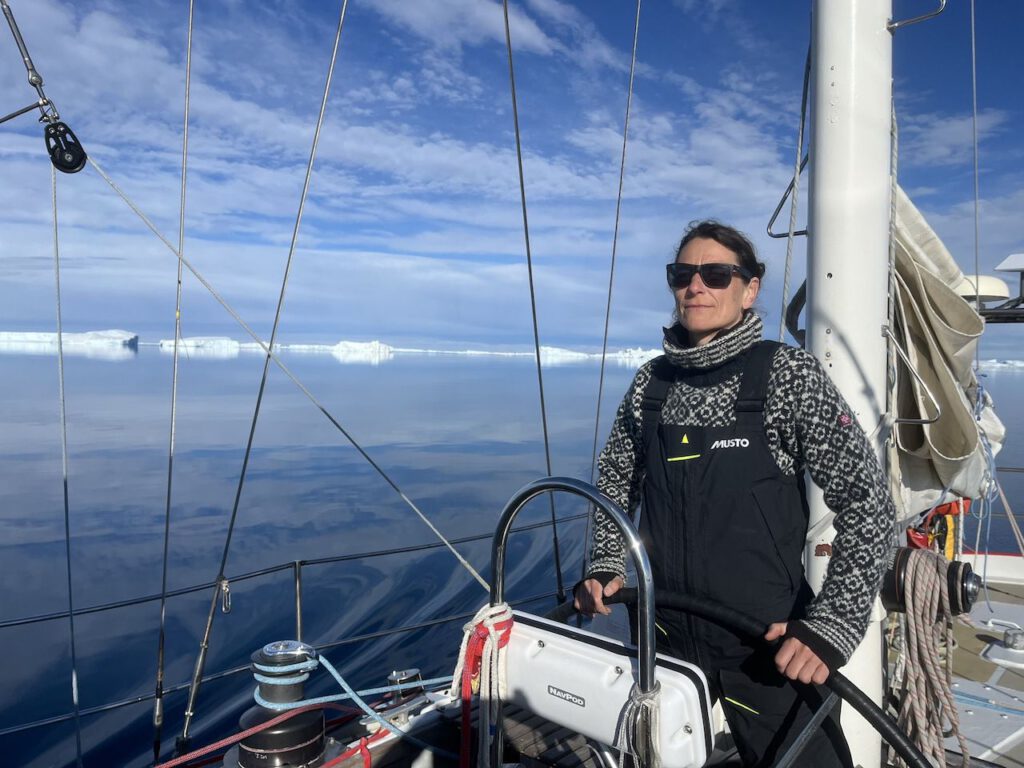
These were also the reason for geologist Otto Nordenskjöld’s Swedish Antarctic expedition with the Antarctica (1901-1904). He wanted to spend the winter on either Seymour Island or Snow Hill Island and carry out his research from there. The decision was made in favor of Snow Hill Island, where construction began in February 1902 on a wooden hut that still stands today. Nordenskjöld and four other members of the expedition spent the winter here twice, the first time planned, the second time forced – but this is an extremely exciting story that is worth telling in more detail elsewhere.
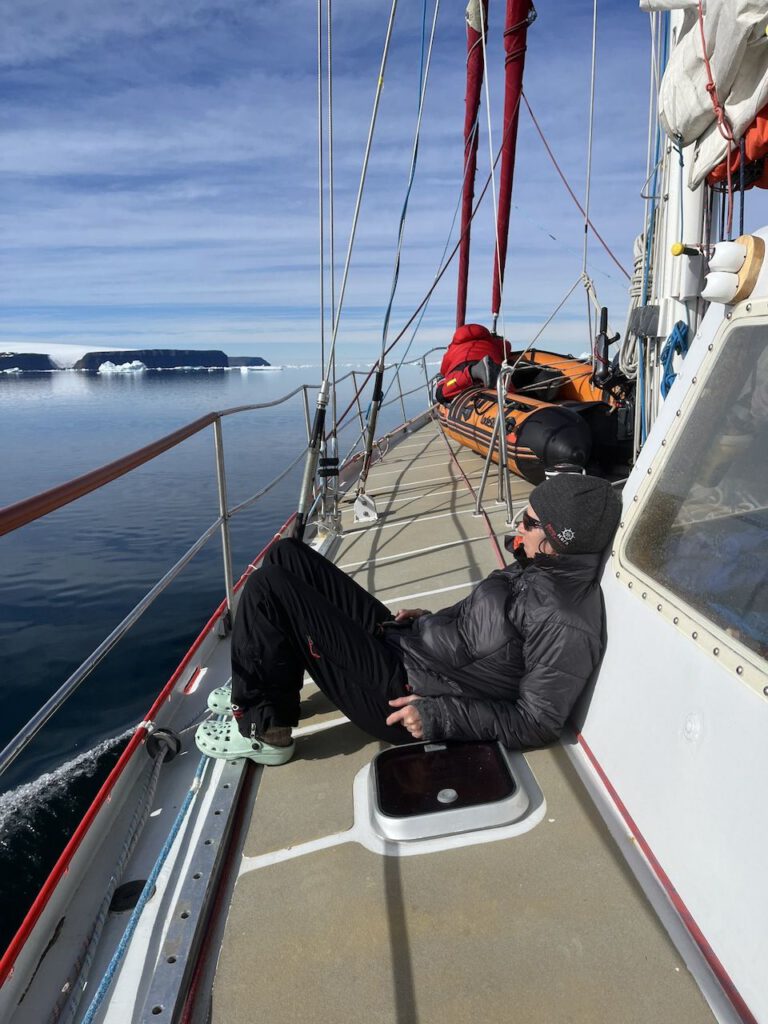
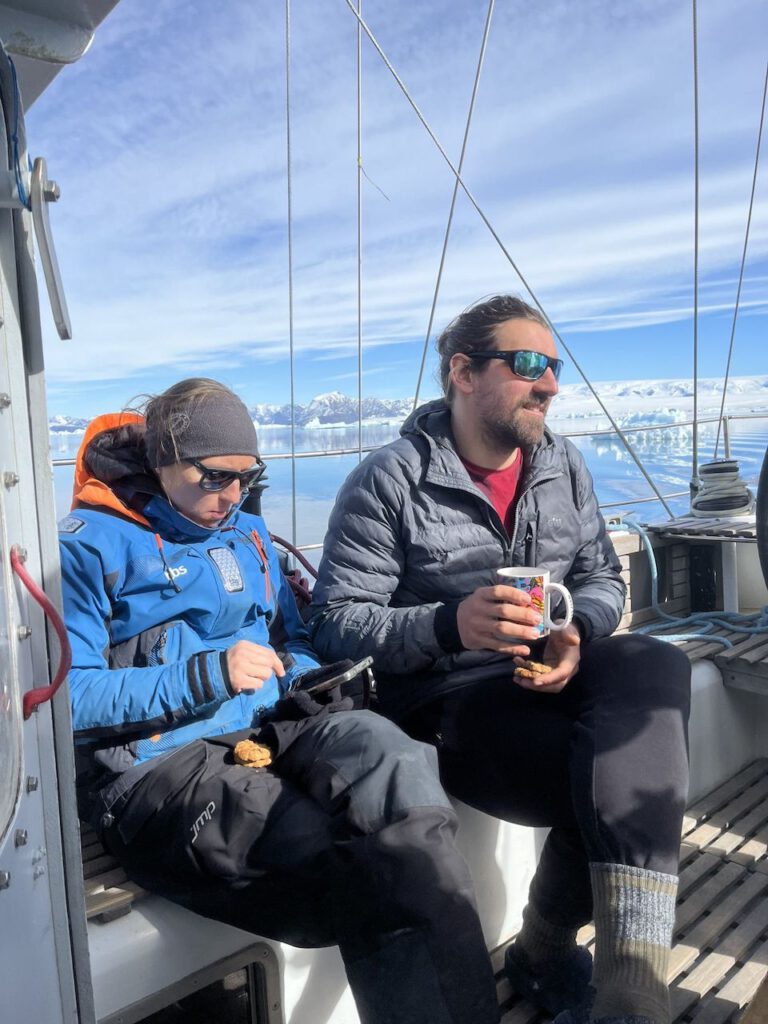
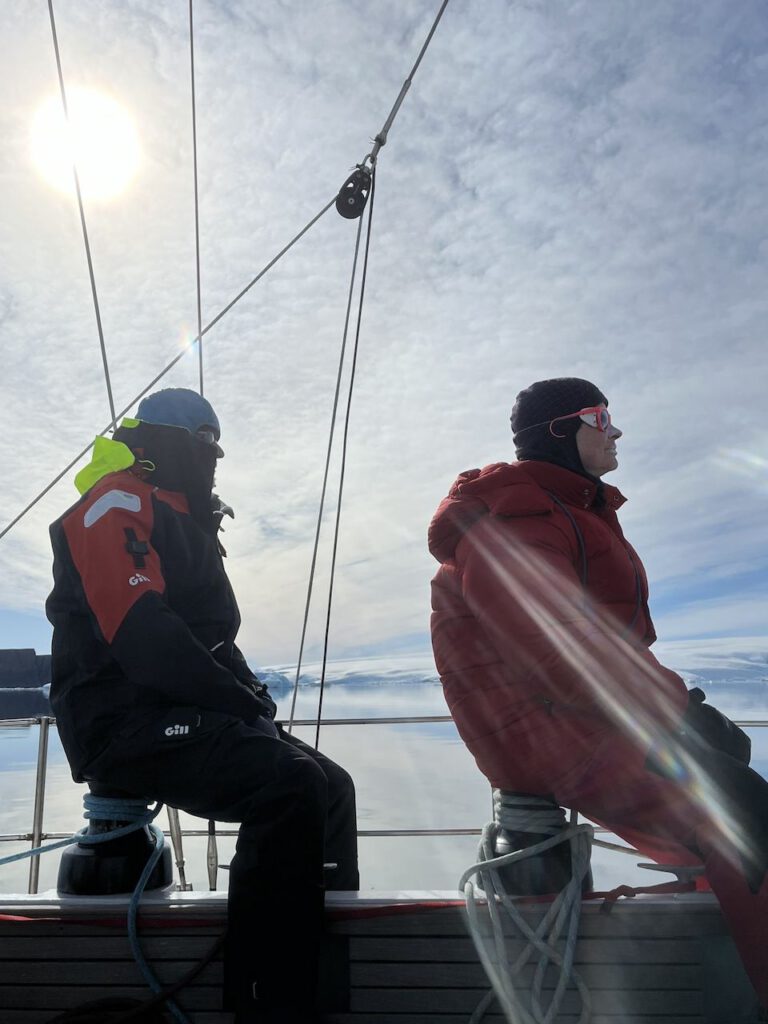
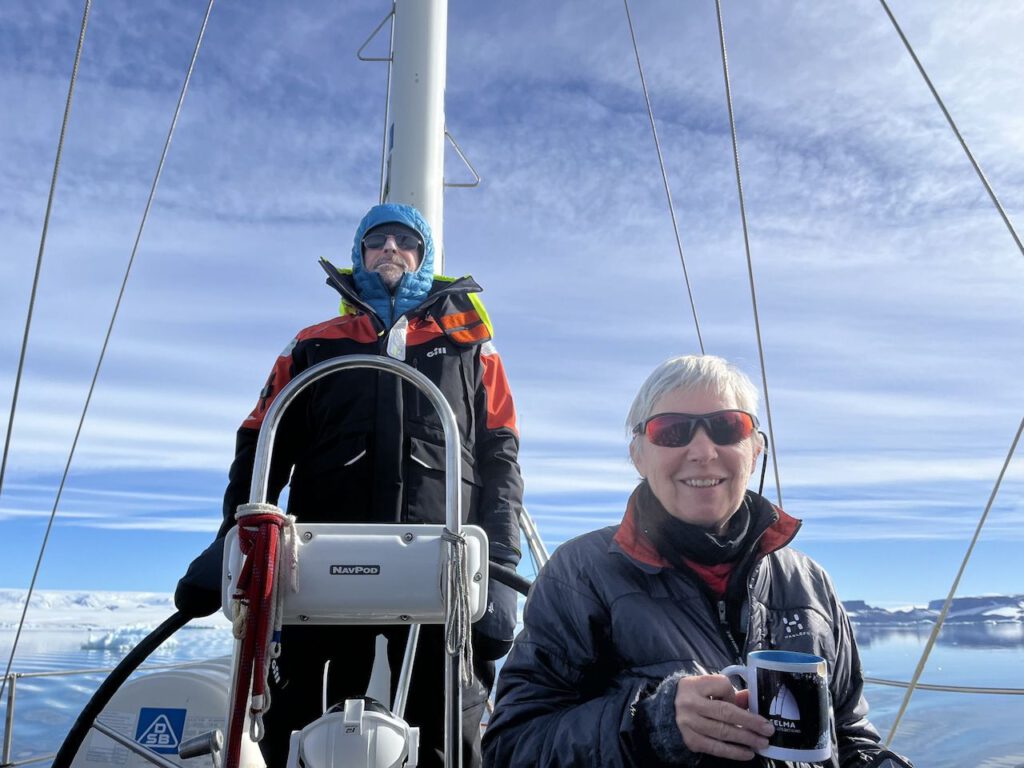
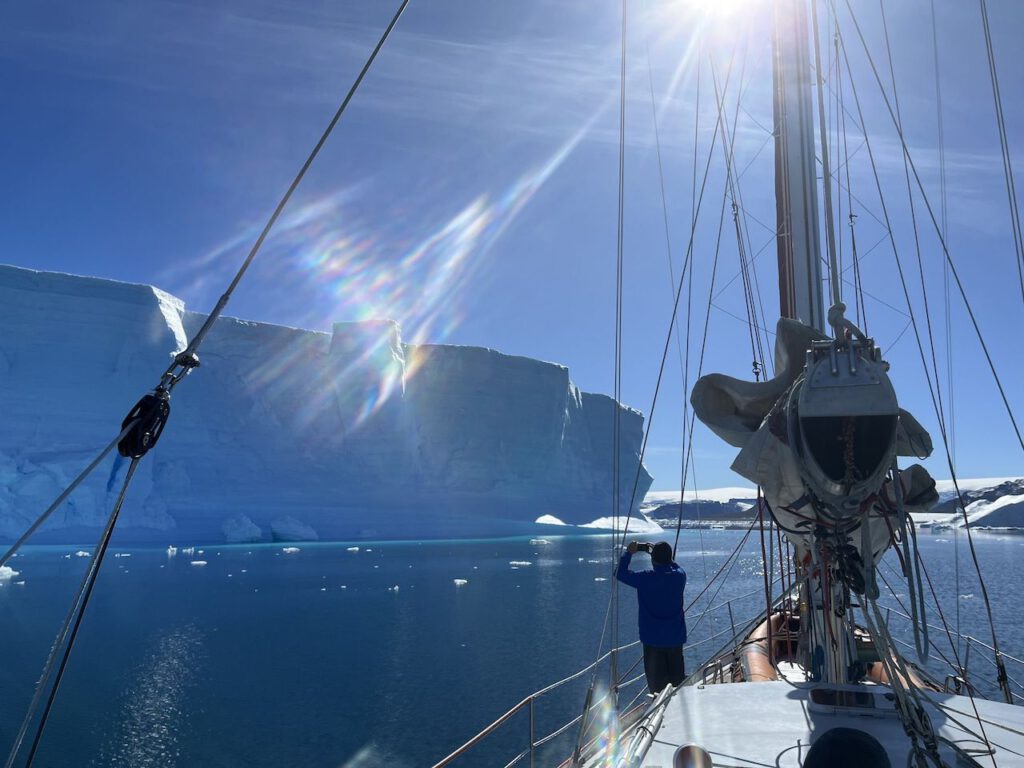
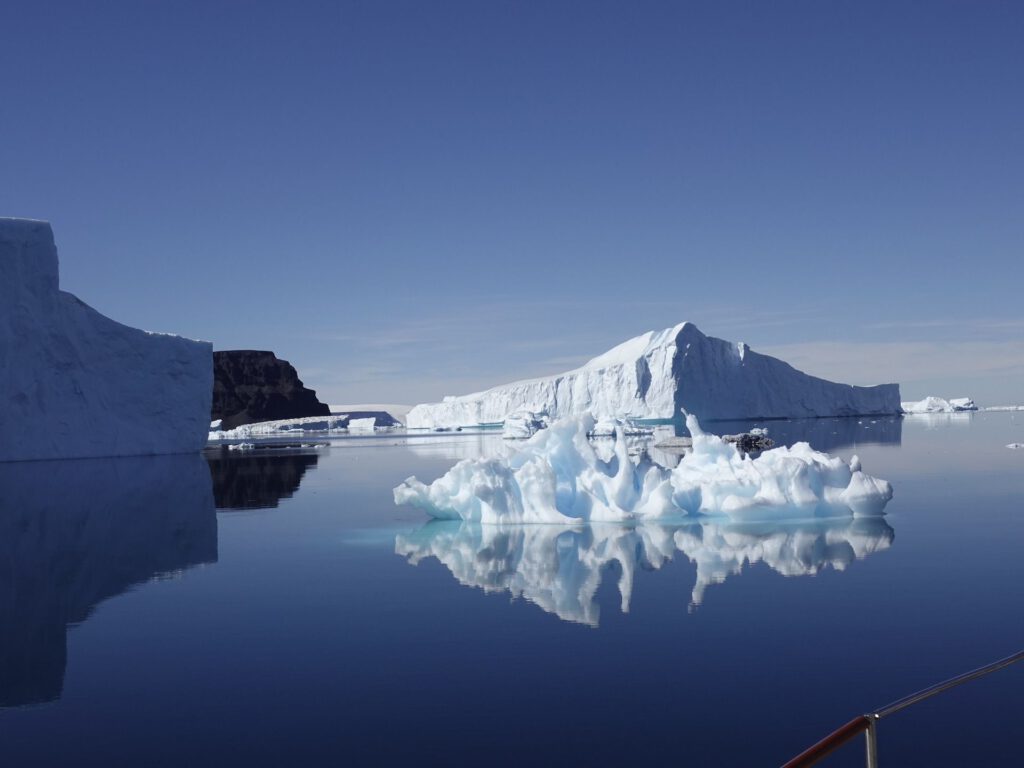
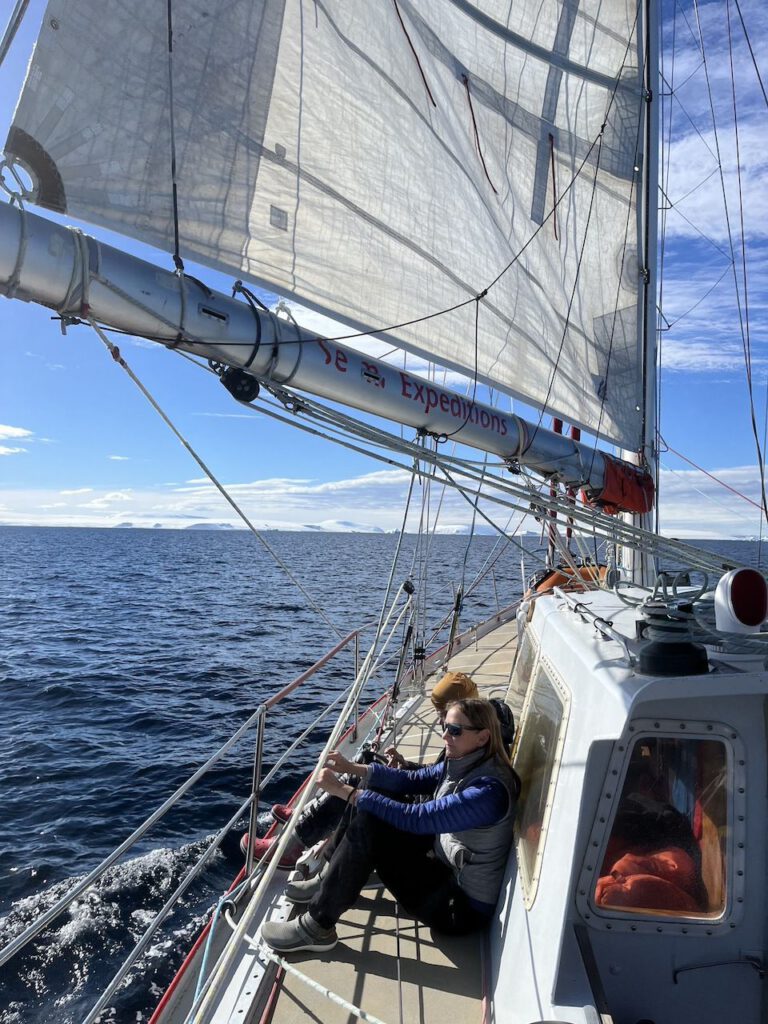
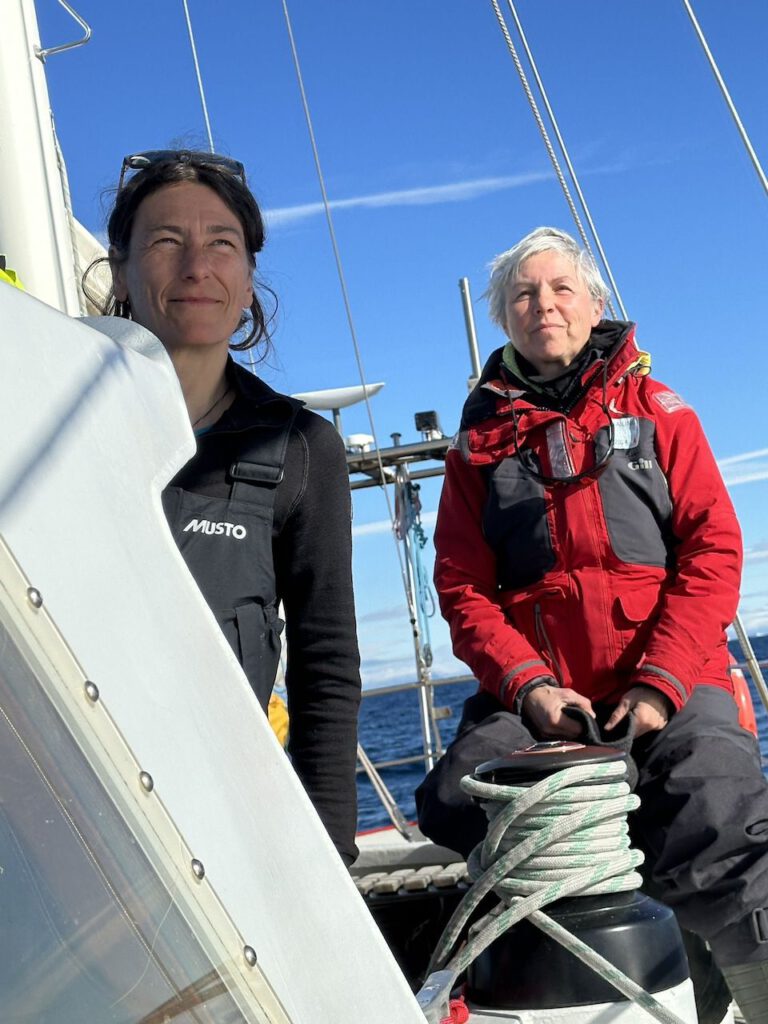
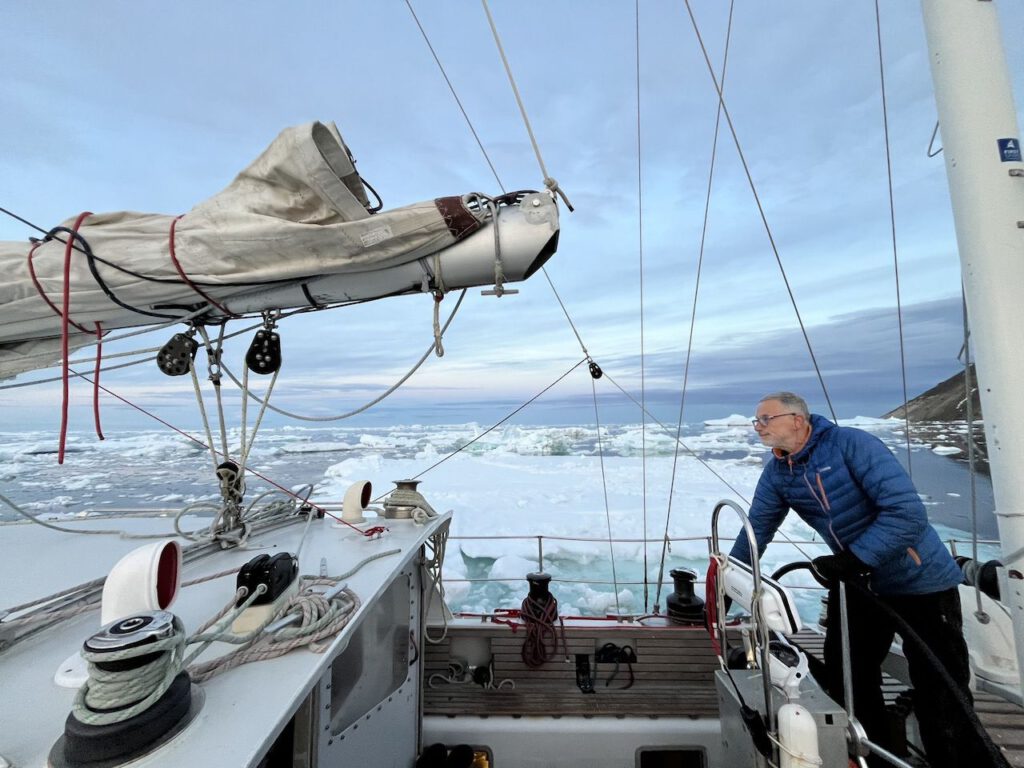
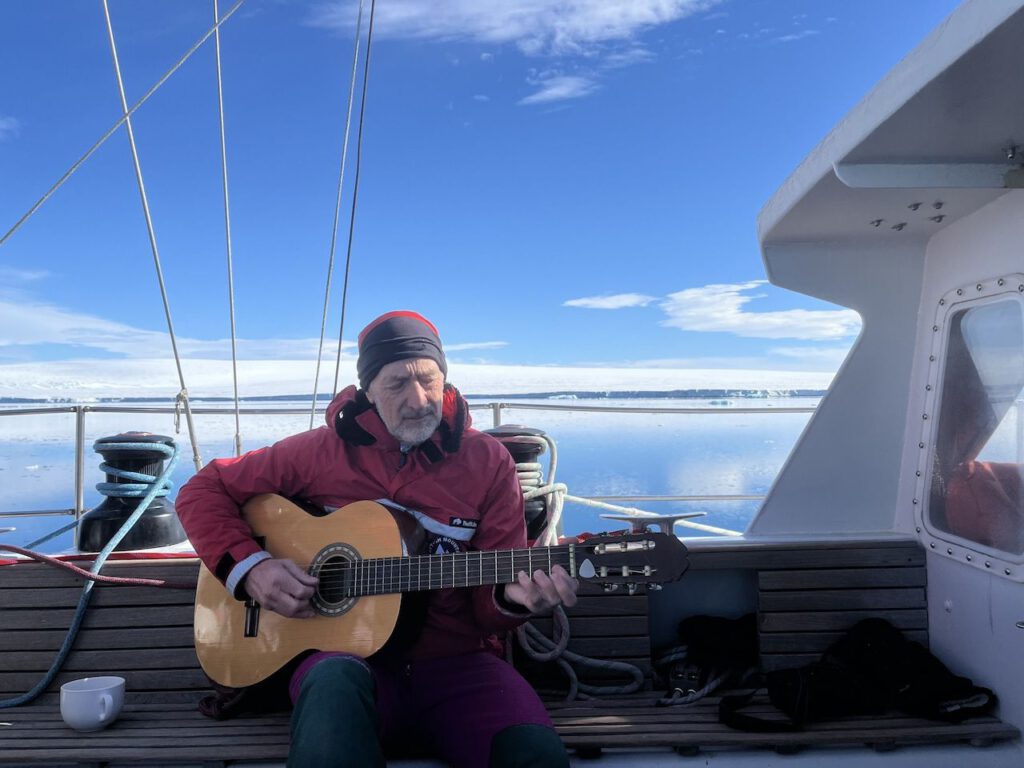
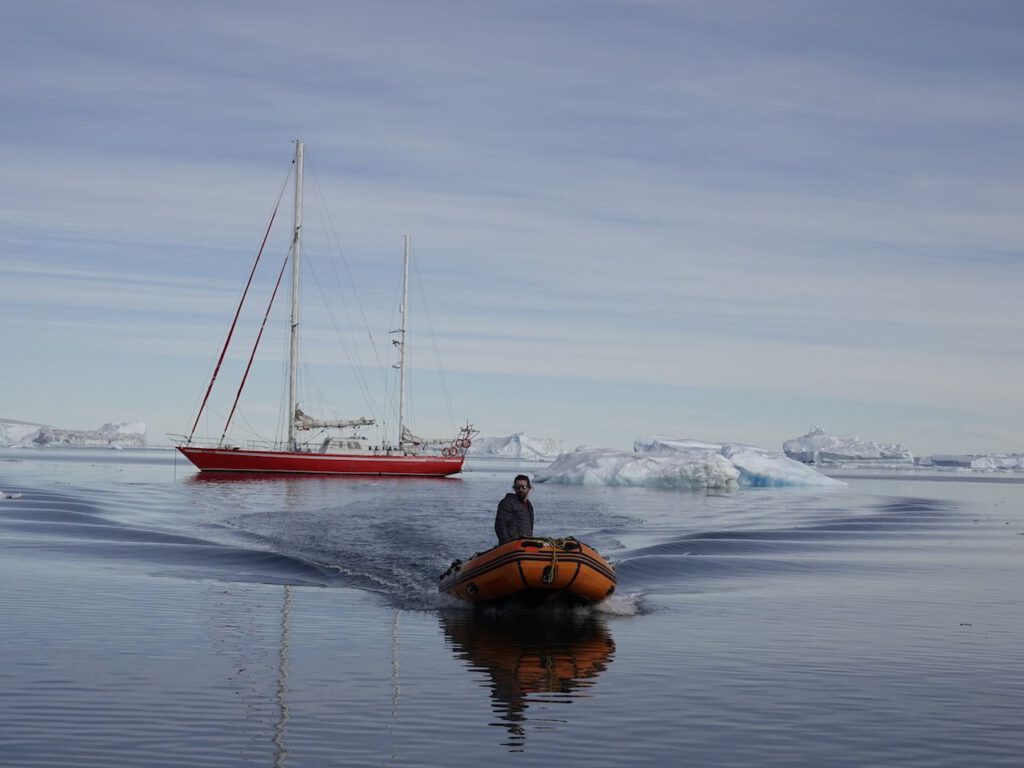
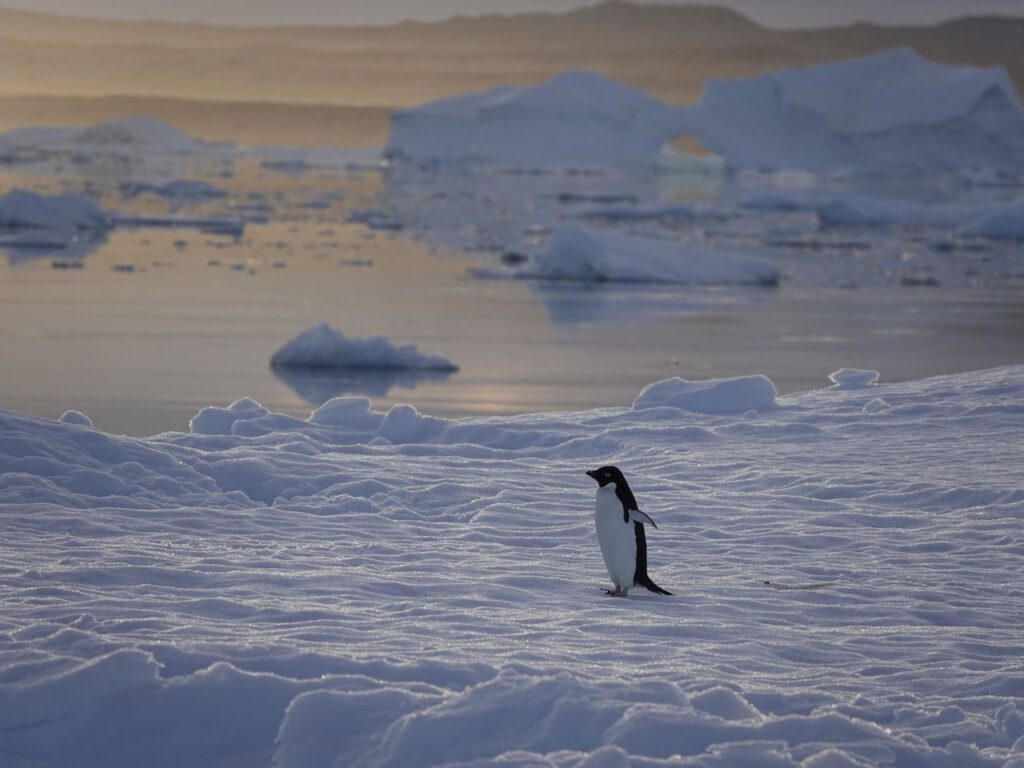
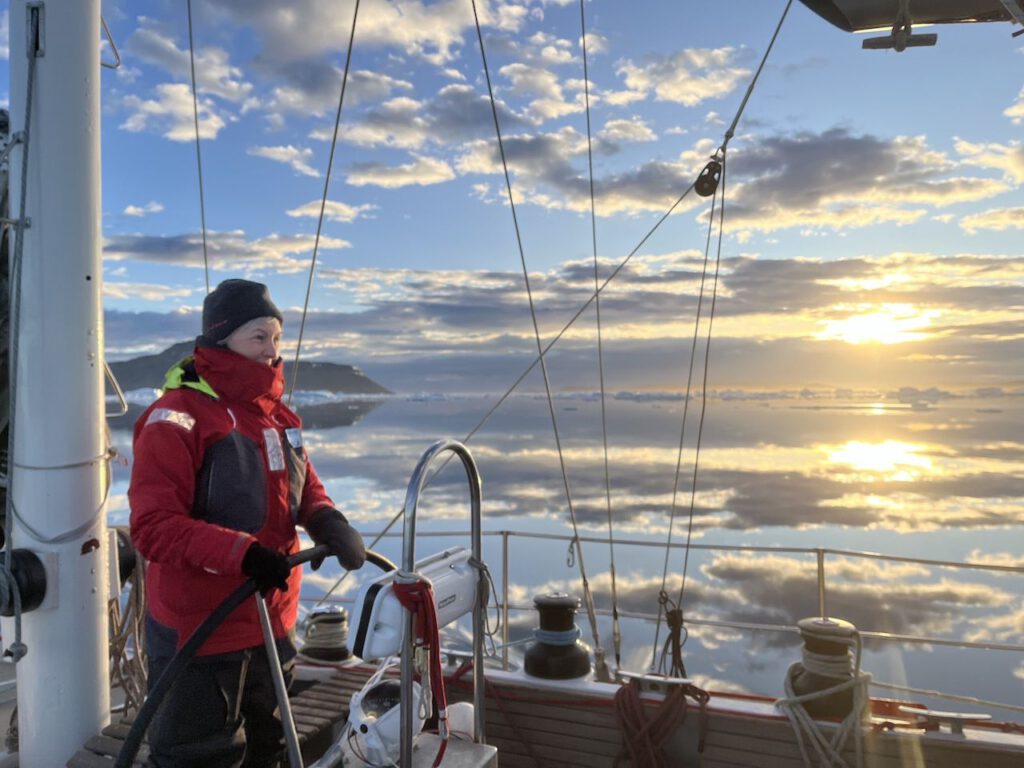
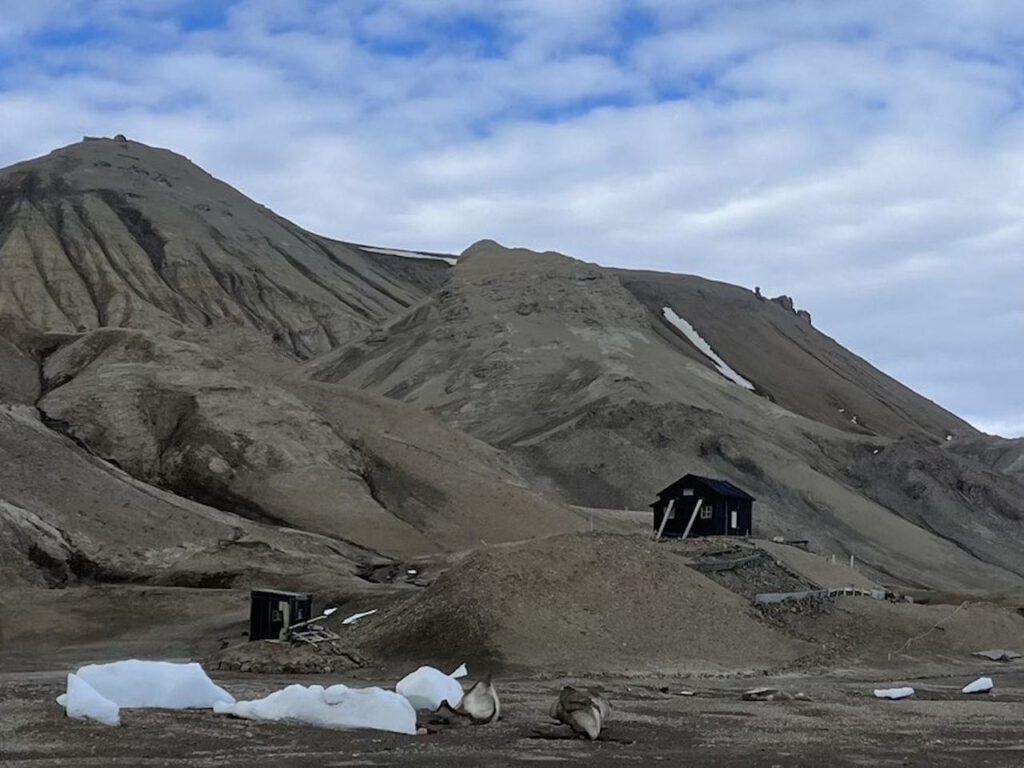
We had also decided to take a small detour to sail south again between Seymour and James Ross Island to the north side of Snow Hill Island to pay a visit to Nordenskjöld’s hut. On a small ice-free area of the island, like a lunar landscape, it stands black and brown on a small hill overlooking a magnificent panorama: the entire bay, deep blue water, dotted with ice floes, icebergs, pack ice fields … in the background the majestic mountains and ice caps of James Ross Island. Whether and how often Nordenskjöld simply enjoyed this view from his window, we do not know. It was very special to enter this small wooden hut, this historic place. Reverently, our boots off, we crept through the simple rooms on woollen socks; breathing in polar history, seeing original relics here and there, such as the old stove at the dining table, the kitchen stove, the work tables or some of the fossils collected by the expedition members. We immersed ourselves in their lives for a moment and could not even imagine what it must have been like to spend two long, dark Antarctic winters in this place.

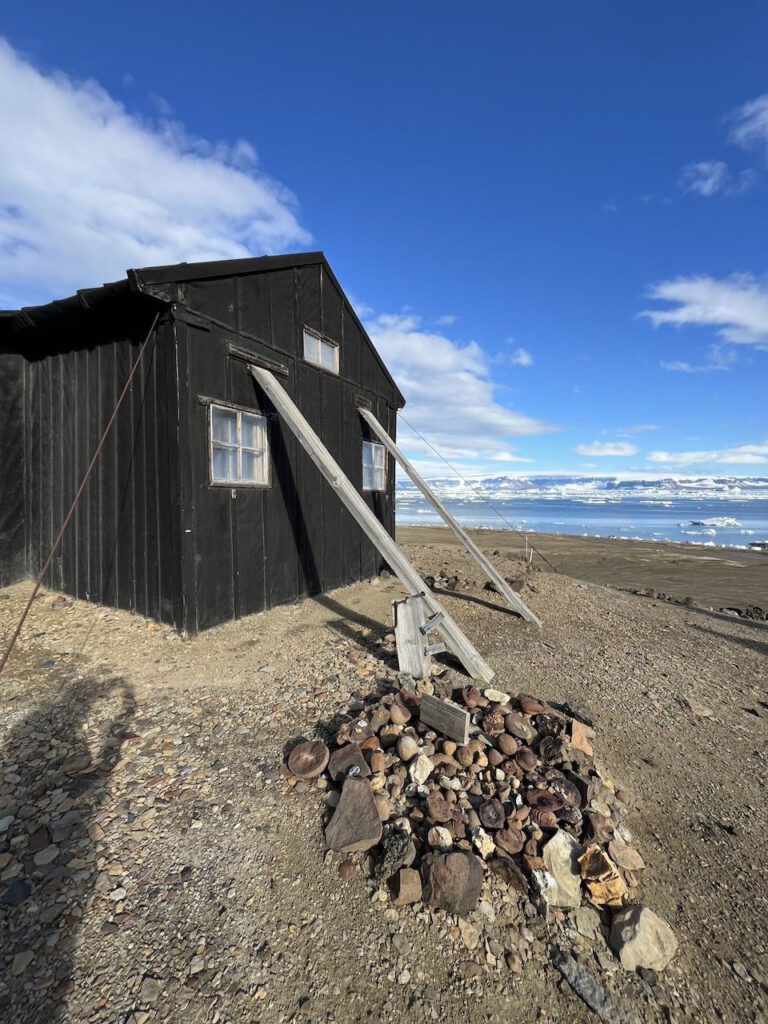
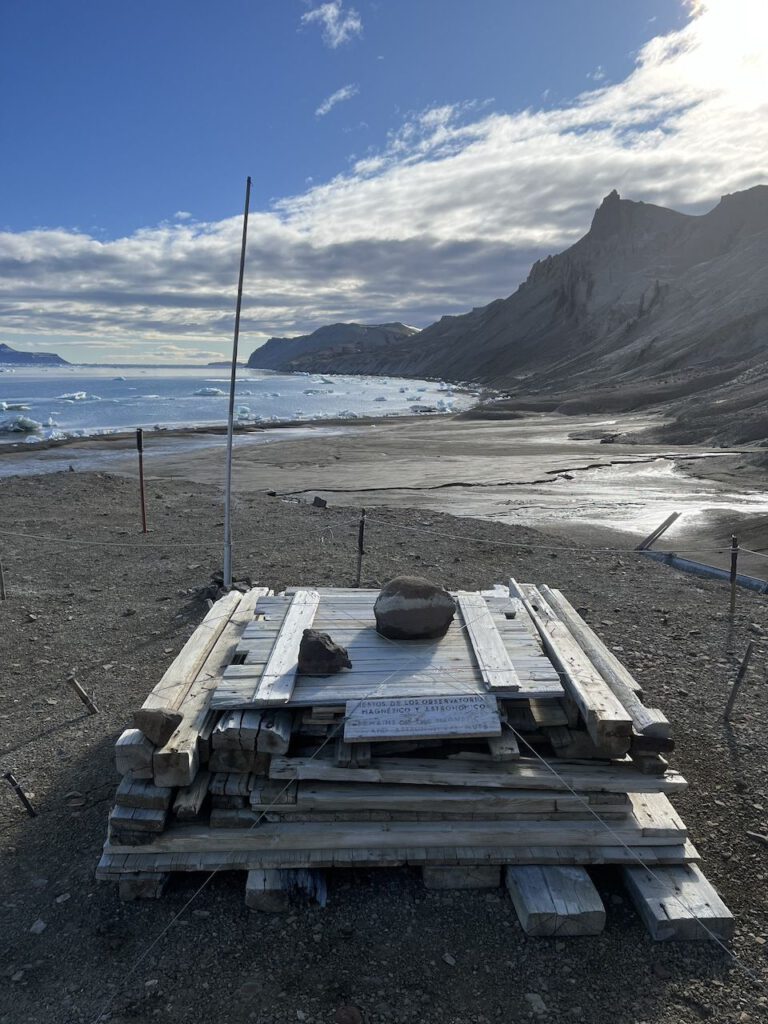
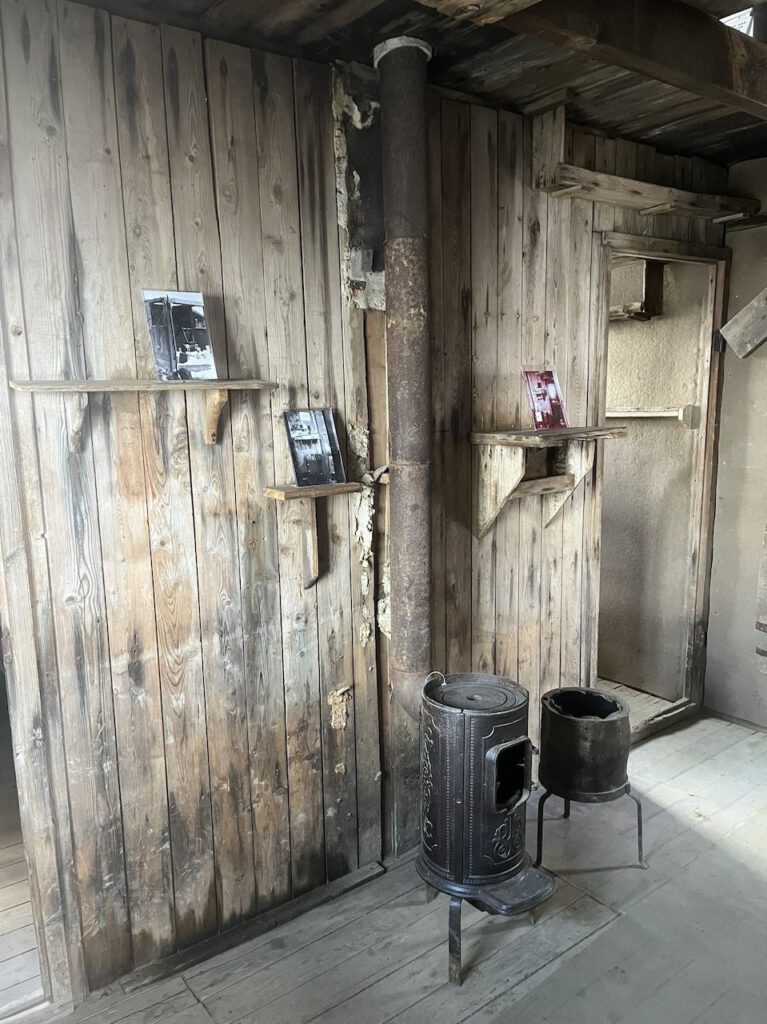
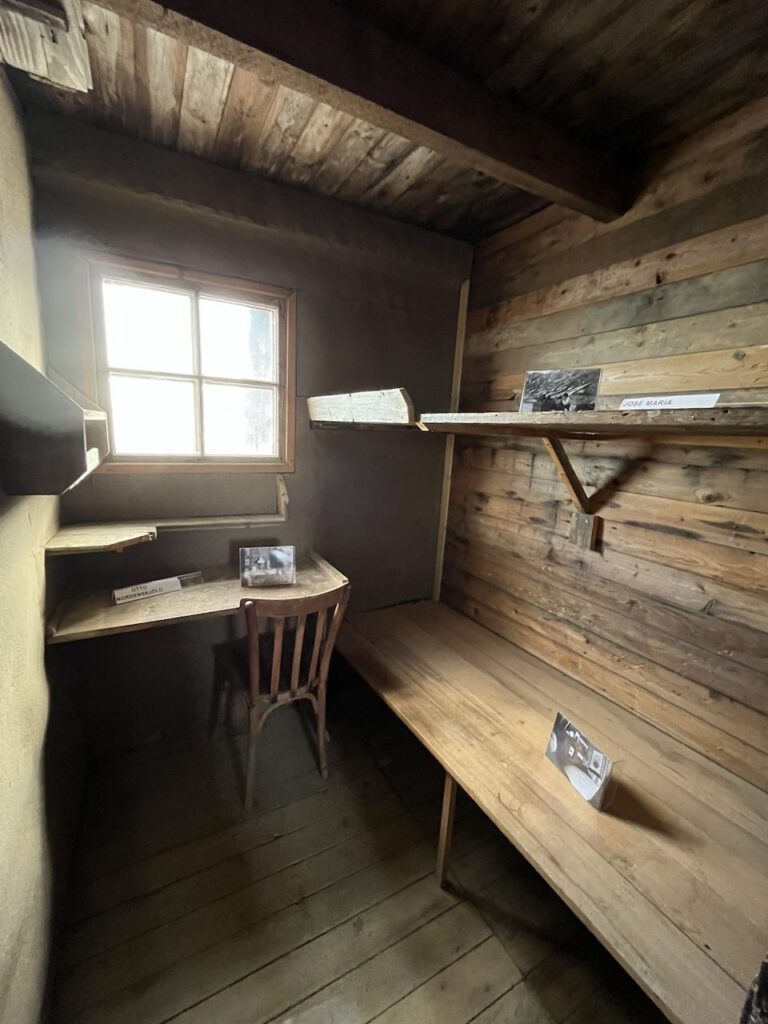
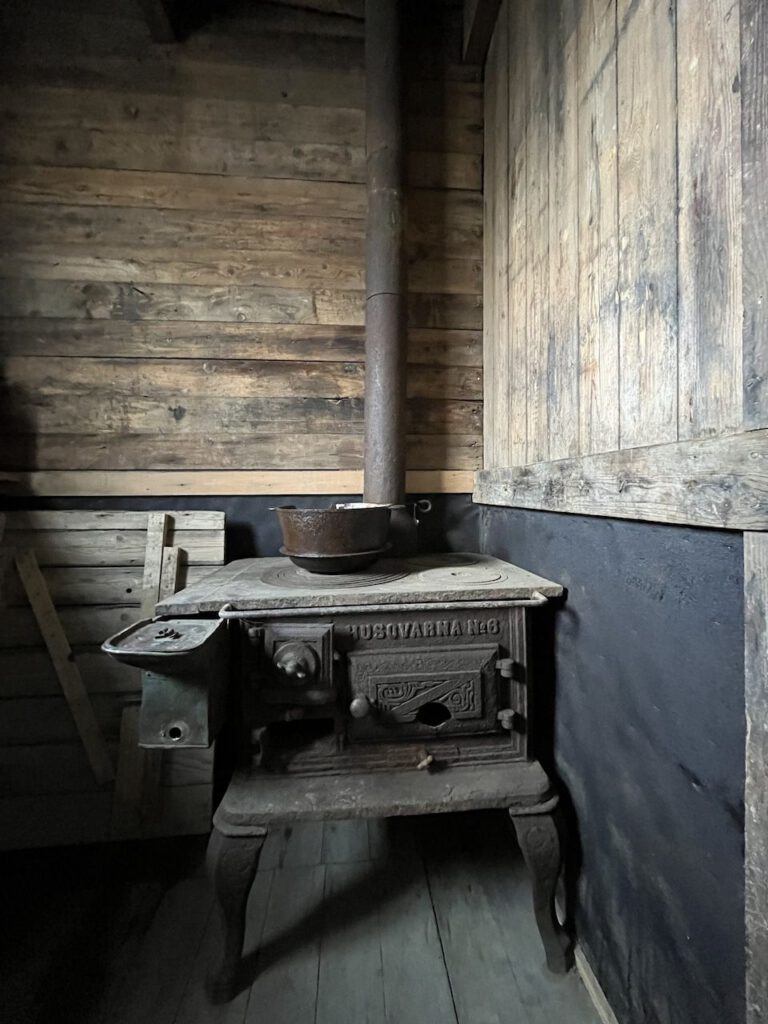
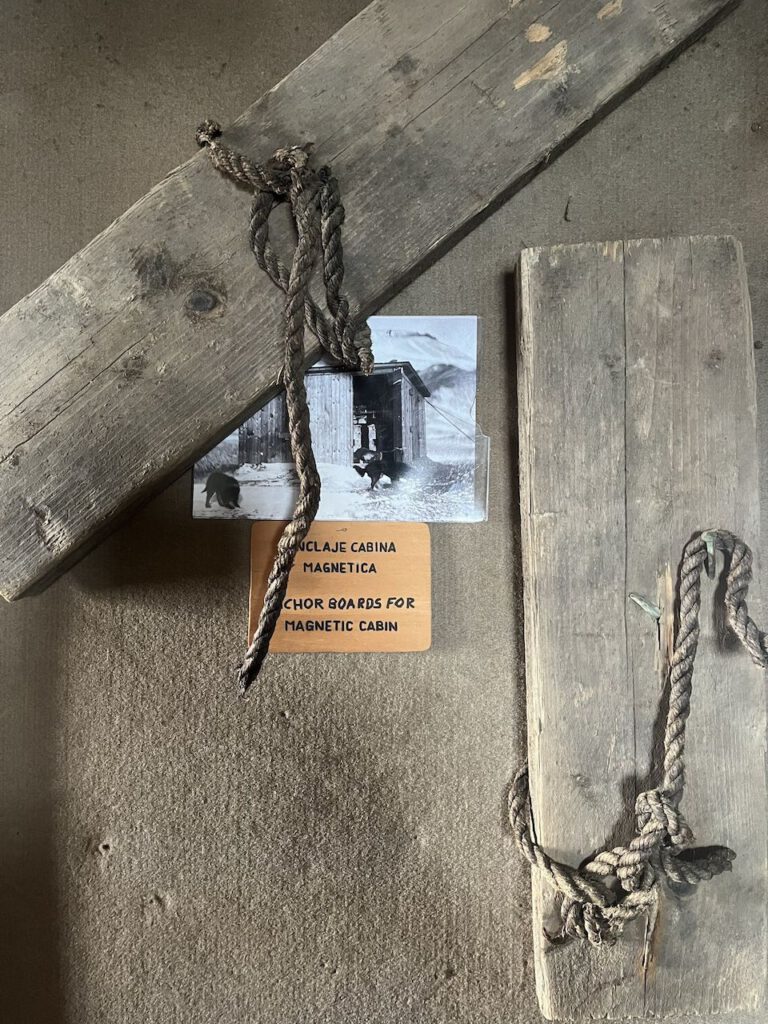
We left this historic place as the tide started to come in and the wind had picked up. After navigating our way through the initially dense drift ice, which gradually thinned out, we set sail, heading north through the Erebus and Terror Gulf. We met up with our old track at Devil Island and the circumnavigation was complete. In Antarctic Sound, we celebrated this successful adventure with a glass of rum for each of us. And Neptune also got his well-deserved share for the safe escort.
